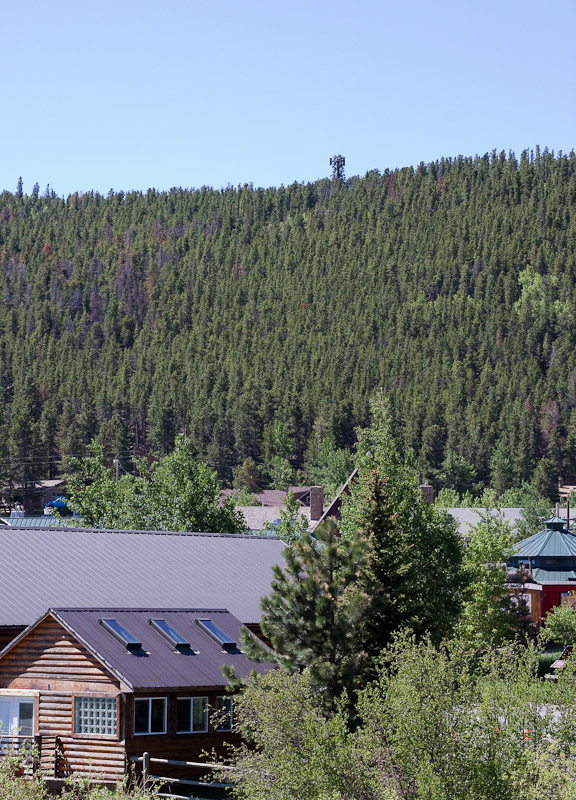This is posted for my fellow music geek friends. Here are my selections since I was unable to attend this month’s gathering.
Fake Plastic Trees, Part 2
If you haven’t seen part 1 of this series, then click here.
It’s been about a month since I posted part 1 of this series. The cell tower has been completed and those with AT&T have cell service. It was reported in the local newspaper that Verizon will be adding their equipment to the site at some point in the near future, but it’s vague.
In part 1, I said I’d rather see a plain cell tower rather than a fake pine tree. But, now that it’s finished, it’s not so bad looking. They made improvements to the fake-tree cell towers I’ve seen in the past. Don’t get me wrong, it doesn’t look like a tree; but it is camouflaged in a way that doesn’t seem to draw my attention to it too much. If I look up on the hillside, it’s noticeable.
I’ve got some photos. First is the view of the finished tower from town. It’s that very tall tree on the horizon.
The remaining photos will chronicle the completion of the tower, continuing from part 1.
A blog note
I discovered this weekend that this blog didn’t view correctly on screen resolutions of 1024 x 768. I am not currently using any monitors, desktop or laptop, that are that narrow. But I know a lot of people still are. The fault lies with the people that created the base theme. When they added the date tags on the left, they were positioned with a negative Left style attribute which caused them to get cut off on 1024 screens. And, there was no scroll bar to allow a viewer to scroll over to look at them.
At first I was going to edit the graphics to shrink the overall size down. But looking at the work involved, and considering that most new computer monitors have a wider aspect ratio, I decided against it. But I did enclose the whole theme in another <div> and made changes to the style sheets so at least the viewer has a horizontal scroll bar when using a narrow screen.
I’m happy for the moment of how the re-designed top banner area turned out. I did it the hard way. Just the topographic map is like 5 Photoshop layers. It would have been a lot easier to actually write on a topo map and rip it out, then scan it. But the control freak in me wanted control over every little detail, including what the map actually depicts. So every element is separate. Even the ripped-out paper is just plain white paper scanned on a black background, the map image added in software. I guess the whole project was more of an learning exercise. And there was nothing better to do on the rainy weekend.

